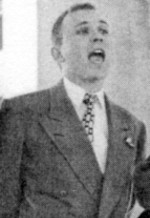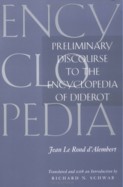
Richard N. Schwab in 1951
Richard N. Schwab played the
role of the "History Major" in the 1952 performance. At
the time of the show, he was a graduate student in history. Upon his
arrival at Harvard, Schwab spent his first couple of nights rooming
with Tom Lehrer, while he found more permanent accommodations.
Regarding the group of friends
that got together to perform the "Physical Revue", he notes,
"We all had a good deal of fun sitting most evenings around a
long table in the Harkness Commons dining hall at Harvard, eating,
joking, and talking about the same kinds of things other students
were talking about at the time. It was lively, humorous, and stimulating,
with very little that was serious or profound. Of course, everybody
realized there was something remarkable about Tom, and knowing him
added many memorable experiences to our time at Harvard. He was naturally
friendly and most appealing and comfortable to be with. And he had
the knack of getting us involved in amusing things we would not have
thought of ourselves or would not have had the time to carry though.
One was a musical ceremony on Arbor Day when we seeded the grass with
ball bearings and planted coat hanger "seedlings" under
the stainless steel World Tree that dominates the Commons courtyard.
Tom wrote the songs. Of all the graduate students I knew he was the
least stressed about the inevitably intense demands of the high-powered
graduate programs we were in. He didn't appear to be fazed by it,
and it never seemed to keep him from the many other things he enjoyed
doing.
Schwab completed his Ph.D. in 1954, and assumed he would be drafted immediately. But the Korean war was over, and his efforts promptly to get his military obligations behind him failed. Nevertheless, his 1A draft status was a serious impediment to finding a job, since employers feared he would be drafted out from under them. So, he spent a year working at a Ford assembly plant as the "left hand front door inside window winding mechanism applicator"(!) Finally, he got an interview with the University of California, Davis, which was just changing from being an agricultural school to a general university. The interviewer forgot to ask him about his draft status, and partly because of that he was offered the job. This put him in a bit of a quandary. He wrote the person in charge of the draft board from his home town, and she had the authority to assure him he would never be drafted! He continued at U.C. Davis for the rest of his career.
His early scholarship focused on early modern literature and the 18th century Enlightenment. He authored (together with W. E. Rex and J. Lough) a highly-regarded 7-volume work, Inventory of Diderot's Encyclopédie. The Encyclopédie, a landmark work of the Enlightenment, ran to 35 folio volumes and attempted to summarize all human knowledge, including the tools and methods of artisans and tradespeople. Click here to view some of the wonderful illustrations from the Encyclopédie. Click here to see the Tree of Human Knowledge constructed by Diderot and D'Alembert.
Later, he joined forces with physicist Tom Cahill to pioneer the application of PIXE (Proton Induced X-ray Emission) to the analysis of rare books. They used this non-destructive analysis to determine the chemistry of Gutenberg's ink. Gutenberg had to invent the first of all printing inks to go with his epochal invention of printing. Schwab and Cahill found that this ink was essentially a slurry of copper and lead. By measuring the ink's copper-to-lead ratio on each page of a number of Gutenberg Bibles, they were able, in effect, to probe right back into Gutenberg's original print shop, for which there are no contemporary records whatsoever. They proved that a new batch of ink was mixed up each day, and thereby were able to reconstruct Gutenberg's day-to-day production. Ultimately, he had six crews working simultaneously on printing the huge Bible. (Thus, he was not only the greatest of inventors, but also an innovator of early mass production in the style of Henry Ford.) Schwab and Cahill even could discern places in the production schedule where one of the crews fell behind -- and then they could see how they caught up! All this for the first book ever printed -- back in the mid-1400s!
Schwab won a Guggenheim fellowship in 1982 to support this research. He and Cahill went on to apply their technology to a number of other texts, including some fragments of the Dead Sea Scrolls, and founded the Crocker Historical and Archaeological Project (CHAP) to continue this work.
Prof. Schwab has
written a number of books, but only one is easily available.
(Click the cover to purchase from Amazon.com) |
 |
Return to main page for "The Physical Revue"
Suggest more or better links .. Return to PhysicsSongs.org main page
Background image: Covers for Tom Lehrer's albums